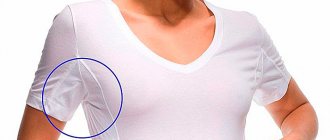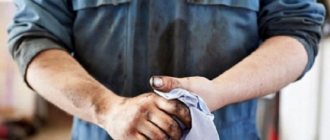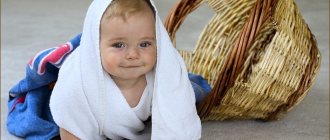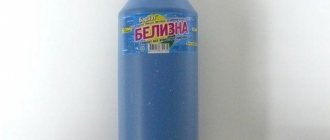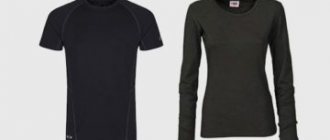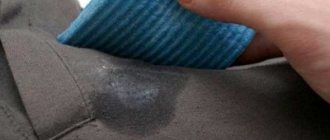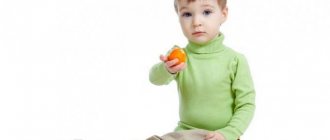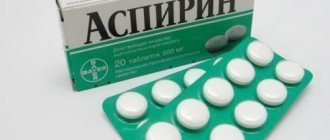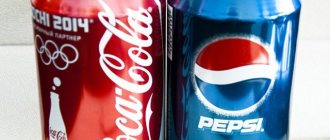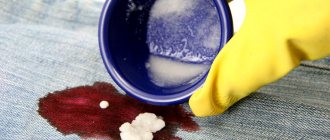Soap bubbles - how much joy and unimaginable delight these transparent rainbow balls bring to children. But this same “joy”, at the same time, causes a lot of trouble for mothers who are surprised to find marks that have not been washed off on children’s clothes. This is not surprising, because not everyone succeeds in removing difficult stains from soap bubbles after washing!
Today we will find out why you won’t be able to remove soap bubbles the first time, and we will give some tips on how to deal with soap stains that have already appeared.
What can bubble stains stick to?
The so-called “peak epidemic” of soap bubble prints occurs precisely in the summer - it is during this period that children actively play and spill colorful bubbles of soapy liquid on their T-shirts and dresses.
During particularly active games, your fabric-covered home furniture may also suffer. If clothes can be somehow reanimated, then getting rid of stains from furniture is much more difficult.
Incorrect treatment of atopic dermatitis. 5 main mistakes
Atopic dermatitis is a chronic inflammatory skin disease that causes itchy red patches, rashes, peeling and dryness. This disease is diagnosed in 30% of children and 10% of adults. However, atopic dermatitis is often not given due attention, and incorrect treatment of this disease can slow down the onset of remission and worsen the overall level of health. Dermatologist Anna Trushina talks about the 5 most common mistakes in treatment tactics.
Mistake #1. Excessive diagnostics aimed at identifying “non-skin” causes.
The reasons for the development of atopic dermatitis lie in genetically determined features:
1. From the skin - associated with a violation of the barrier function.
2. From the immune system. In response to the penetration of irritants and allergens through a broken skin barrier, inflammation forms.
Therefore, it is not advisable to look for the cause in helminths, disturbances of intestinal microflora, intoxication, etc. The entire range of examinations prescribed in this regard only because of atopic dermatitis is not justified. Efforts aimed at finding the “root cause” outside the skin are better directed towards competent treatment of the skin itself.
Mistake #2. Search for the causative allergen.
Atopic dermatitis is not an allergic disease in nature. However, allergic reactions can be combined with atopic dermatitis as a concomitant disease. This happens in approximately 20-30% of patients.
Therefore, atopic dermatitis itself is not a reason to undergo expensive panels for specific allergens, and the test should only be taken if a specific allergic reaction is suspected in some patients.
Mistake #3. Following an unreasonable diet.
Often atopic dermatitis becomes the reason for prescribing a strict “hypoallergenic” diet. Children's diet becomes monotonous and boring. However, such dietary restrictions are not scientifically justified and do not bring the desired result, even if there is an allergy at the same time.
What is the reason?
It’s not for nothing that baby bubble stains are considered the most difficult to remove. This is not only because they cannot be washed off the first time with ordinary powder, but also because dirt does not always react even to “particularly effective” stain removers. Their peculiarity is that most stains become noticeable after rinsing the item.
It is extremely difficult for a child to protect himself from contamination with soapy water while playing, so many mothers ask a logical question - “how to wash stains from soap bubbles on clothes?”
First, let's find out why the soap stain does not wash off. Many parents and especially grandmothers incorrectly believe that only low-quality Chinese toys leave stains. And they are partly right!
The thing is that the composition of soap bubbles includes: water, sugar, soap solution and glycerin - a viscous transparent substance, which is precisely responsible for the annoying gray stains, which is so difficult to wash off!
Its peculiarity is that when interacting with washing powders and the gelatins found in them, it reacts - hence the stains that appear only after washing.
Therefore, when thinking about how to wash soap bubbles from clothes, first of all you need to understand how to get rid of this harmful component.
How to prevent soap bubbles from contaminating your clothes
A characteristic feature of the marks left by bubbles is very insidious; they appear only after washing. Many young mothers immediately blame the washing powder, the machine, because they are not able to wash things.
Once on shorts, trousers, shirts, the bubbles dry out and become invisible. After washing this product, you may be horrified to see a huge number of stains and stains; removing them is very problematic.
Many experienced parents assure that it is simply impossible to remove such pollution. That is why, in order to avoid an insidious problem, it is easier to prevent it. White things, colored things, on which a fresh stain has appeared, a wet imprint of a poor-quality bubble, will have to be immediately soaked with heated, clean water.
Be sure to add dishwashing gel and leave for thirty minutes. Machine washable.
How to prevent soap bubbles from contaminating your clothes
If you don’t have time to wash your jeans, dress, or skirt in a timely manner, and they are too expensive, you can use specialized products. It is advisable to try the proven, reliable product “Astonish OXY plus”. It will help remove stains left by bubbles and will help with all other types of stains that cannot be gotten rid of.
The easiest way
How to remove soap bubble stains? No matter how trivial it may sound, ordinary water will come to the rescue here. The item stained with bubbles must be rubbed under running water, only then will they begin to wash off. If this doesn't help, soak it in a bowl of hot water. You can also add a little lemon juice there.
After washing, the stains are still there - if the fabric is delicate, use Nefras or any other bleach. Apply the product pointwise (only to stained areas) and leave for 20 minutes.
As for furniture: you will have to work hard to revive the sofa, but there will definitely be results. First, you need to rub the stain that has appeared several times with a wet cloth (the procedure must be carried out at least 3-4 times, otherwise nothing will work). Then apply bleach to the long-suffering area (preferably Vanish foam - this will make it easier to distribute the product over the surface), or rub the stained area with laundry soap. If the necessary condition is met, eventually all the stains should come off.
Stain removers
Among the ready-made compositions, the Udalix Ultra pencil received a lot of positive reviews. Its price usually does not exceed 100 rubles. In addition to stains from soap bubbles, it easily removes traces of caustic paints, grass, berries and many other influences.
According to the manufacturer's recommendation, on colored fabrics it is recommended to test the effect of the pencil in an inconspicuous area. Only if there are no visible changes can full processing begin.
For particularly difficult stains, the treatment must be repeated, increasing the action time to 20-30 minutes.
Another option is a combination of Udalix with BOS. You will need a large saucepan:
Old or especially large stains can then be additionally washed with laundry soap. After washing, rinse the item thoroughly and dry as usual.
We remove stains from different types of fabrics
Jeans
If your child stains his denim, don’t despair! We will tell you how to remove soap bubbles from clothes made of this type of fabric.
- Soak the product in a bowl of water, after pouring a tablespoon of ammonia into it. Leave the item to soak, then wash it in the washing machine.
- How can you remove stains from soap bubbles on clothes other than dishwashing detergent? Rinse the jeans thoroughly under running water and rub the stains with detergent. Removing the stain will take 30 minutes, then simply wash the product.
Cotton
When working with this type of fabric, it is not recommended to overdo it with all kinds of acids.
The following methods will help remove streaks from soap bubbles:
- Wet the problem area with heated acetone, rub it into the fabric and leave for 20 minutes. Wash your trousers afterwards.
- Citric acid is an equally effective remedy. Place a few drops of lemon juice on a damp cloth and rub it, then soak the clothes in water and then wash them in the washing machine.
How to wash denim and cotton
When stains appear on denim and cotton clothes, there are special ways to get rid of them.
Dish gels remove stains from bubbles. Rinse denim clothes in running water, thoroughly rub the stained area with detergent, and leave for ½ hour. Then wash the items in a machine with the necessary powder.
If stains remain on cotton items, proven methods will help get rid of them:
The stain removal capabilities are simple and help clean white, black and multi-colored clothing.
other methods
Bile soap
This soap is an excellent stain remover. You can buy it, if not in every industry. A store, but in any hardware store - for sure. It's not expensive. It is necessary to wash the stains with this soap and scrub thoroughly. Doesn't always work the first time; This will require some diligence. For best results, rub the item with it, soak and leave overnight. In the morning, try again to scrub the print from the bubble with a brush and rinse.
Antipyatin
This product is often remembered when it comes to cleaning difficult stains. It is even sold at fixedprice, so there will be no problem purchasing it. The sequence of actions with this soap is similar to that given above. You need to do the procedure several times, and then wash the item by hand or by machine.
Chlorhexedine
According to the reviews of many mothers of mischievous fidgets, this is a real “lifesaver” in the fight against stains from soap bubbles on clothes. It is necessary to pour the solution onto the gray stains and leave to soak. Then wash the contaminated areas with laundry soap (or any other stain remover) - and you’re done! Rinse your clothes thoroughly.
You can also use hydrogen peroxide to remove stains. Both products are inexpensive (so purchasing them will not damage your budget), can be purchased at any pharmacy, and act equally effectively: after some time after soaking, you will notice how the stains from the bubbles begin to lighten. Just wait a little longer and they will come off completely.
Vegetable oil
We agree, it sounds doubtful, because oil itself very successfully stains clothes, but not in this case. This is where chemistry itself comes to the rescue. Oil molecules interact with glycerin molecules, breaking it down, after which the clothing is freed from the stain.
You will need: dilute 3 tablespoons of vegetable (sunflower) oil, half a glass of washing powder and a quarter glass of bleach, dilute all the ingredients in five liters of boiling water and soak your item damaged by the solution of soap bubbles in it. Leave to soak until the water cools completely, and then hand wash the fabric. For greater effect, after soaking, you can throw the item in the washing machine for 30 minutes.
Bleach "Ac"
Let me make a reservation right away that this method is very extreme and is only suitable for delicate, plain white items.
If your T-shirt or undershirt is damaged by soap bubbles, you can resort to soaking it in bleach for two days. The main thing is not to overdo it with the concentration of the product and not to destroy the material.
You need to dilute half a glass of bleach in a basin of warm water, soak the item there and forget about it for a couple of days. After the expiration date, check the material for any remaining stains - if there are any, rub them with laundry soap - now they should wash off without any problems.
Industrial products: table
| Name/price | Peculiarities | Instructions |
| Bile soap/120-450 rub. |
|
|
| “Antipyatin”/42 rub. |
|
|
| Ace (Ac)/144 rub. |
|
|
What to do if the stain is on a white T-shirt with a colored pattern?
You should try to apply whiteness pointwise to problem areas. Whiteness is a very effective remedy, but you need to be very careful when handling it, because it not only removes various stains well, but also “successfully” destroys the color. The item may fade completely or become covered with yellowish spots. Therefore, whiteness is applicable only to completely white or partially white things.
Stains from soapy water do not always appear only from careless handling of a bottle of bubbles. They may be in the shape of a circle or ring with smudges around the edges, or with splashes in the form of the sun, but this does not make it any easier to get rid of them. Therefore, to prevent clothes from fading after using white, apply the product to the fabric where there are traces of soap bubbles using a cotton swab, toothbrush, or cotton pad. Let the whiteness work, then first wipe off the problem areas with a wet cloth, and then wash the entire thing.
It should be remembered that any item damaged by a solution of soap bubbles must be washed separately, so as not to spoil the others that are in the washing machine with it.
By the way, soap bubbles do not always leave stains on clothes. Some manufacturers make a solution without using glycerin. As a rule, the bottles of these bubbles say that they do not leave traces. If you are seriously concerned about this problem, take a closer look at the label before purchasing in a store.
If one of the methods helped you or you have even cooler methods in your stash, please share them in the comments!
Effective methods
If the moment is missed, and after washing in the machine, mom discovers gray marks, there is no need to be afraid. There are effective remedies that will definitely help get rid of unsightly marks on clothes.
Vanish
Vanish is a very popular remedy. You need to soak it with it, and then hand wash your children's clothes. Then you can wash your clothes in a machine. The practice of using Vanish shows that after pre-treatment with this stain remover, even on colored clothes, stains from washing in a machine with the right quality powder do not appear.
This is due to the fact that Vanish contains components that dissolve glycerin.
Less popular is Sana. However, it has a great advantage - it can be added directly to the machine, without pre-soaking and washing. It also contains components that dissolve glycerin, preventing it from reacting with washing powders. Therefore, after washing, unsightly gray spots do not appear on dried items.
Lemon juice
Need to know! There are folk remedies for removing marks from soap bubbles.
Among the folk recipes, an effective way to remove an existing stain is to soak it in hot water, to which you should add a little freshly squeezed lemon juice.
Then you can wash the clothes in a machine with the necessary powder for the fabric.
Bile soap
An excellent stain remover is gall soap. It's expensive, but it's easy to use and produces great results. First you should wash your clothes and thoroughly rub away the marks. Soaking overnight is allowed. The next day, wash the stain again with your hands, rub it with a brush, then rinse the clothes and dry.
Important! The high cost of soap pays off in its effectiveness in removing stains from soap bubbles.
Chlorhexidine
A medicine familiar to everyone is magical for saving children's clothes. It is recommended to thoroughly rub stains from bubbles with the solution and leave for ½ hour. After washing with laundry soap, rinse and dry the clothes. All traces disappear.
Hydrogen peroxide
Peroxide is good for removing stains. Its advantage is its affordable price and quick effect on stains.
With it, you need to soak visible stains, lightly wash with your hands, rinse and dry the clothes. The effect is noticeable already after soaking.
Antipyatin
The cleansing properties of Antipyatin are confirmed by research from NITSBYTHIM. They act on old, complex protein stains with synthetic enzymes and amino acids contained in soap, aimed at destroying specific stains.
Manufacturers recommend being careful when removing stains from wool and silk clothing. The soap is effective even when washed with cold water. It does not contain allergy-causing components, making it a good choice for removing stains from children's clothing.
Bleach Ac
The Ace line of whitening products complies with TU 2382-073-00204300-97 and quality certificates, which confirms their “pure” composition, safe for people with allergies and for children. Ace is used on all types of fabrics. The main substance is sodium hypochloride, it destroys the structure of the pollution, changes its color spectrum, which is important when removing glycerin gray color.
Interesting! Even if the glycerin itself is not removed from the fabric, it becomes discolored and becomes completely invisible.
